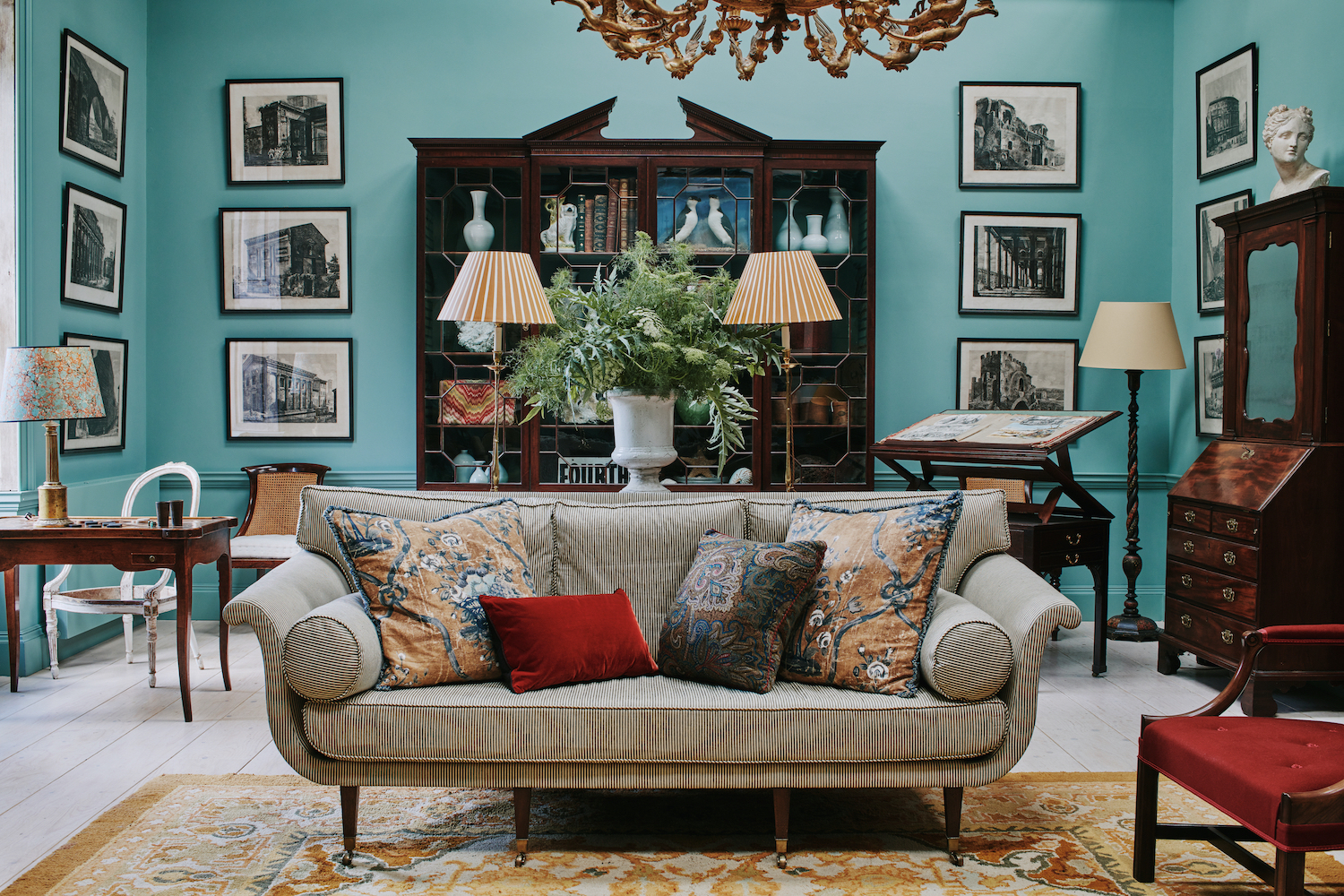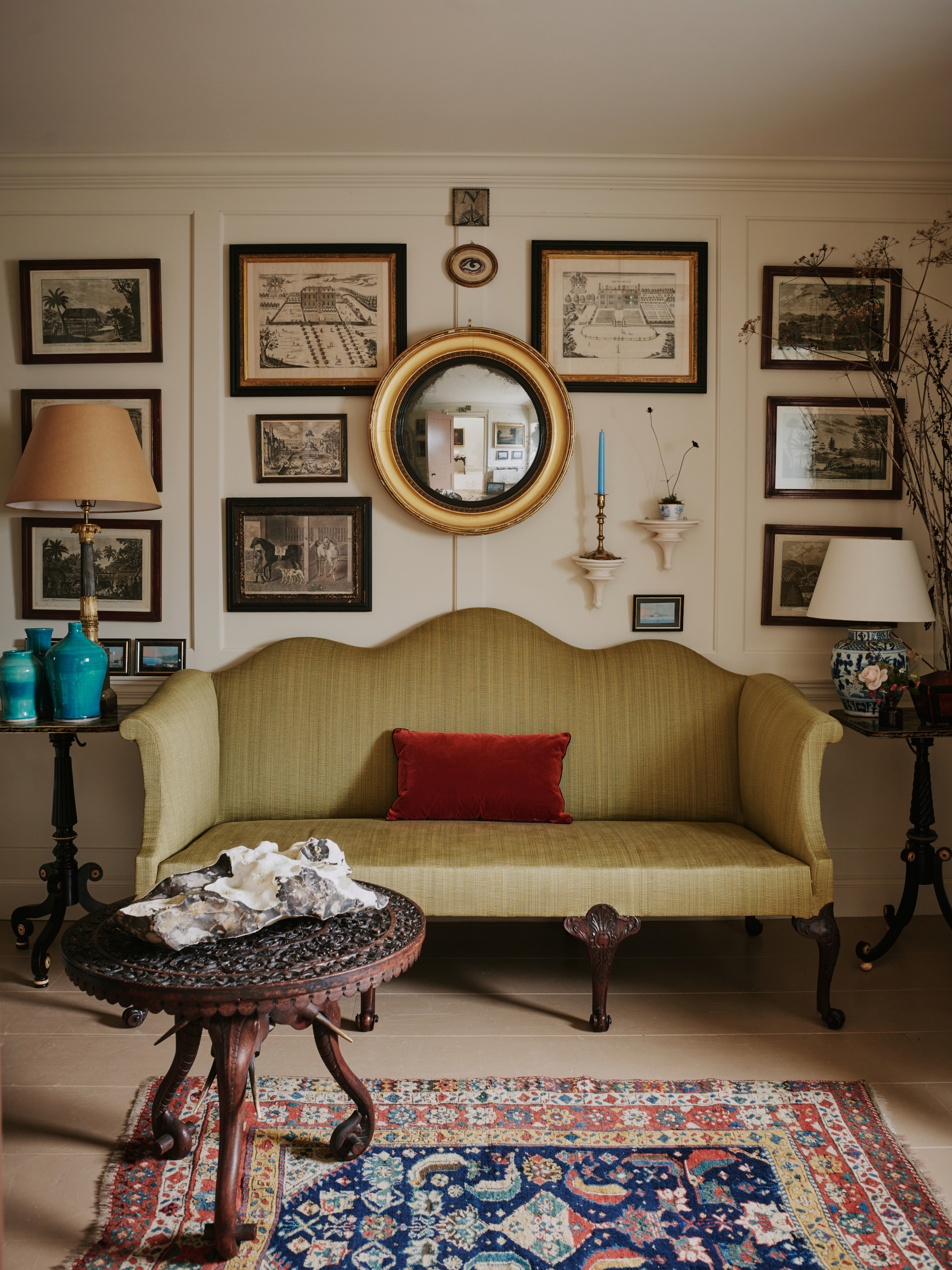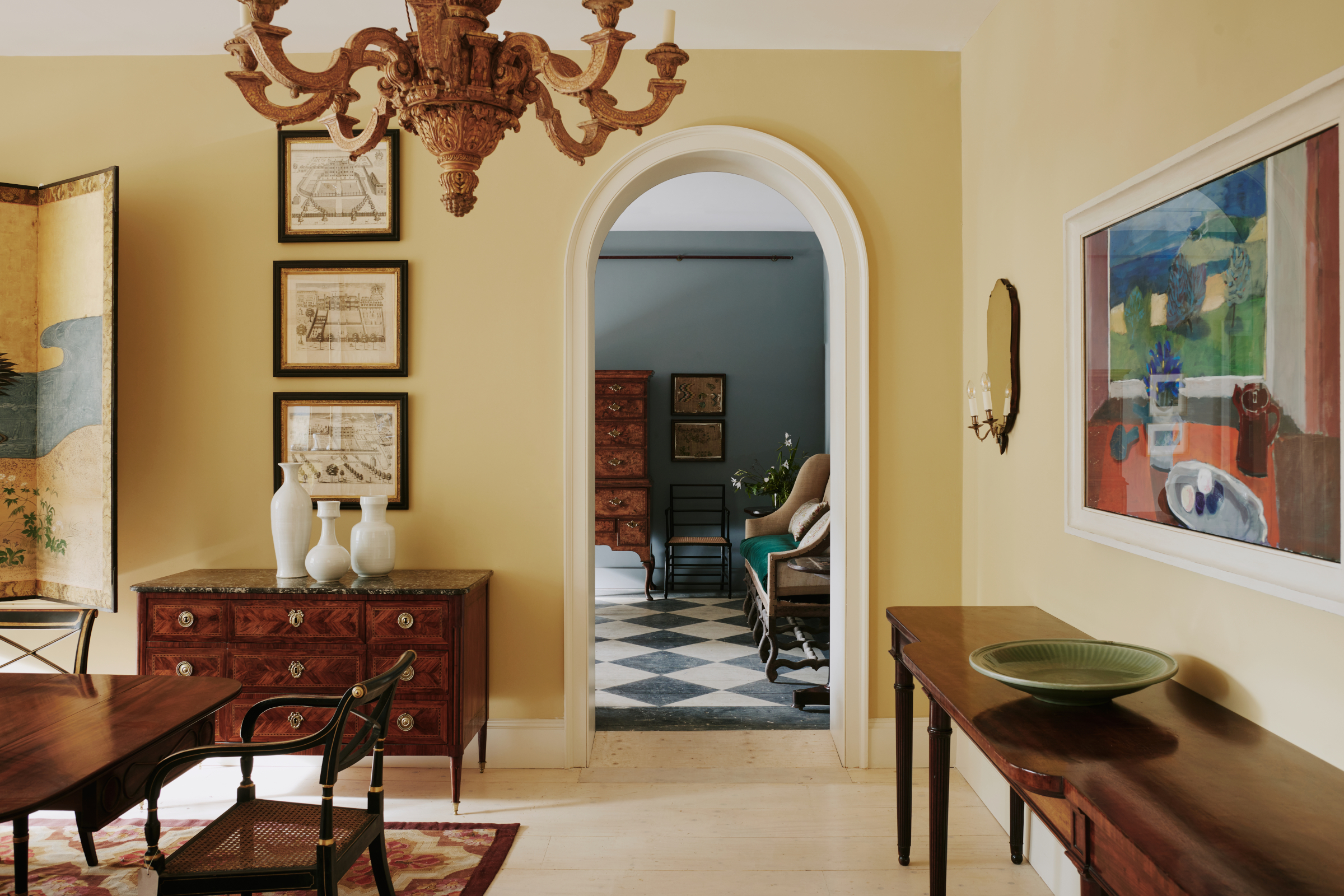Designer Profile: Max Rollitt
Antiques dealer, furniture designer and interior decorator, Max Rollitt’s discerning eye and multidisciplinary knowledge imbue his classically inspired interiors


The most powerful skill set underpinning the credentials of any talented designer is a deep and hands-on education allied with impeccable instinct. The first can be developed with focus, curiosity and determination, the second might be refined over time but cannot be taught.
Over nearly three decades of running his own business, dealer/decorator Max Rollitt has won respect and admiration, on both sides of the Atlantic, for work that demonstrates a sensitive balance of both.
His inspirational showroom and HQ is situated in the Hampshire countryside, conveniently near to Winchester yet in a secluded rural setting. Interior design professionals visit from far and wide to source classical antiques and craftsman-made furniture and to peruse the elegant room sets that showcase them. Inside the converted barn, the attention to detail in the authentically scaled rooms means one could easily be convinced of being located in a Georgian country house or chic city terrace.

Max Rollitt is typically engaged in up to three interior decorating projects at a time, which ensures he can lead every project and work closely with every client. Today he is supported by a team of 12 in his studio, showrooms and workshop. His most recent projects have included an East Coast mansion in America, a townhouse in Chelsea, and an Elizabethan country house in Oxfordshire.
A dedicated upholstery workshop is to be launched imminently, and plans are afoot to add a specialist polishing shop, also onsite. In February 2022 Max Rollitt will be the selected designer and sponsor for the Collect VIP Lounge 2022 at Somerset House, at the prestigious annual international fair for contemporary craft.
A design education

Born to an antiques dealer, touring fairs formed an early and subliminal part of Max Rollitt’s education. 'My mother owned an antique shop, so I grew up around an ever-changing parade of antiques,' he says. Yet his schooling drew him to pursue mathematics, physics and economics. University proved unappealing and by his own admission he ‘dropped out’. 'I’m a visual person – I learn visually I don’t learn academically. I’ve got quite a good mathematical brain, quite a good scientific brain but as far as learning it’s all visual,' Max explains.
A chance meeting ignited his passion for furniture design: a profession that appealed to mind, hand and eye. 'I met Kevin May who called himself a "barn dancer": he used to take down old barns in Wales and rebuild them in the home counties. He made reproduction Elizabethan furniture with the off cuts and there was something about his enthusiasm that rubbed off on me and I thought I’d really like to work with wood.'
Design expertise in your inbox – from inspiring decorating ideas and beautiful celebrity homes to practical gardening advice and shopping round-ups.
Max started work as an apprentice polisher of antiques and then, at the age of 21, enrolled on a one-year furniture maker's course at the respected Rycotewood College. 'This is where I really started developing my eye and my knowledge of design,' he reveals. On graduation he became a junior furniture maker and then worked as an apprentice restorer with Frearson and Hewlett, an antique furniture restoration workshop supporting the top London trade.
After nearly eight years learning the craft he launched his own shop and workshop in 1994 and began making his own furniture range in 1998. The interior decoration came later, organically, with the first project resulting from a customer request to design their entire home in 2006.
Head & heart

Max’s unique career path has undoubtedly fostered an ability to bring both left and right brain into creative business. His honed understanding of context, form and ‘making’ is underscored by an artistic sensibility, and a degree of romance.
Talking of furniture design he reveals, 'I can be the detective and understand what’s right and what’s wrong with a piece of furniture. Things don’t always have to be right, in the sense of being authentically of a period but if something is new it’s important that the form is correct and well balanced.'
He goes on to say: 'Nowadays we are able to access the drawings, compare and understand them through the enormous library of the internet which, from an academic point of view, informs understanding the purity of form and how a piece would have been designed, but it’s also important to consider how a piece has been handled and made.'
'Actually the beauty is in the way it is made and keeping that integrity,' he adds. 'Making a piece look good but also keeping its integrity is really hard. For instance, you can make a Windsor chair on a machine but it has a different feel to when it’s made by hand. We keep the process authentic, we don’t try and make a piece perfect – because they never were perfect.'
The art of design

When it comes to sourcing, Max is 'attracted by patination of antiques and the stories that they tell.' They are the pivot point for everything he does. 'Antiques are always my focus and are intertwined with the other strands of the business,' Max says.
He goes on to describe his design aesthetic as 'layered, educated, elegant and joyful', and places great focus on color, texture, comfort and elegance. Here, his marriage of mathematical and artistic sensibilities comes to the fore. His forte is the ability to imagine and envisage a space in detail. He is able to picture a setting in plan form as well as in all elevations, yet takes a painterly approach to composition, saying, 'I think of interiors as a piece of art, as a painting essentially. The layout is the pencil line, and then I’m infilling it with color, texture and form.'
Resolute on the importance of listening to instinct., Max says: 'Design needs to be really well rooted in something. As an interior designer you have to have some really strong basis, whether it be in architecture, art, fashion. It’s about really delving deep into something and then being able to transfer those skills… but you have to get to that point where you are making strong aesthetic decisions and they are coming from your gut.' He later adds, 'You have to follow your instinct to get to the best result. If you feel you are compromising, or feel compromised, the result is never going to be quite right.'
Pivotal moments

'As a child, I remember being excited about a property that my parents were thinking of buying and imagining how I would change the layout and design the rooms. It’s the first time I remember noticing how much I enjoyed doing this. My second professional interior design job – where the clients asked me to redesign the internal architecture of the house – was also key. I approached it with trepidation but ultimately the results were, I think, very good and that boosted my confidence enormously to carry on as an interior designer.'
Design inspiration

'I’m constantly collecting ideas and filing things away in my mind – from historic homes, museums and galleries I visit, or films I watch and books I read to the people I meet. I always return to Charles Saumarez-Smith’s book, Eighteenth Century Decoration: Design and the Domestic Interior in England.
Design heroes
'William Kent and Christopher Gibbs. Kent because he was at the heart of that iconic moment in English furniture and architecture when Palladian design had reached its peak. We had played around with it for a long time, mixed it with the Baroque and a lot of European influences, and in the 1730s-1740s we really made it our own. That’s when English architecture and furniture reached a seminal moment: when the simplicity of classical form was made English, and I see it as a very good, solid basis for design.
'Christopher Gibbs was just "the don" – the person you aspire to be or to be compared to (I never will be because of I’ve got too strong a feminine side). He shifted our thinking away from a parental view of "correctness" and pushed us into a more playful, celebratory mood.'
IG @max_rollitt

Interiors editor and brand consultant, Kerryn Harper-Cuss has worked on four interior magazines and edited three of these, most recently The English Home, where she was Editor-in-Chief of both its UK and US editions for almost 12 years. She now writes for a number of high-caliber publications, moderates design seminars, and is particularly delighted to pen profile features on world-class interior designers for a regular slot on the Homes & Gardens website.